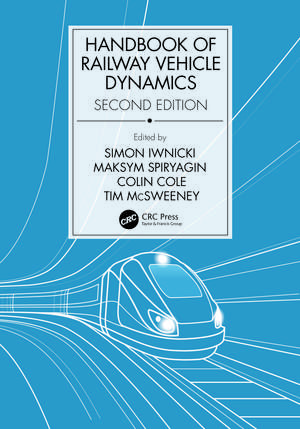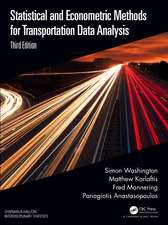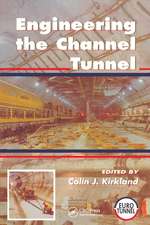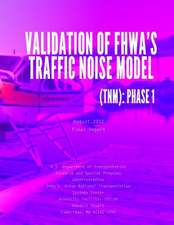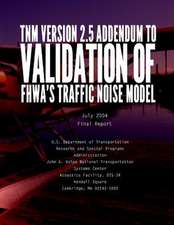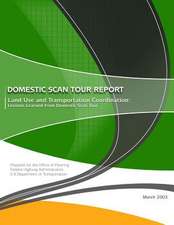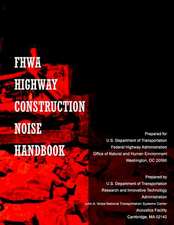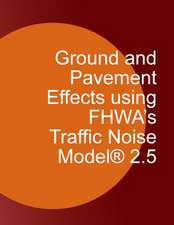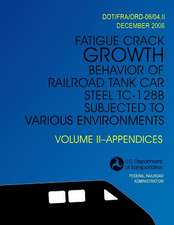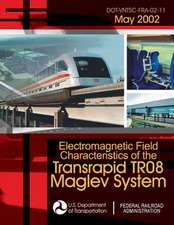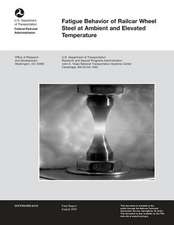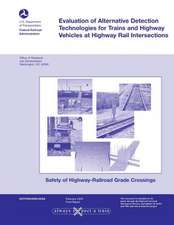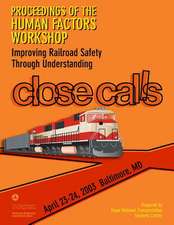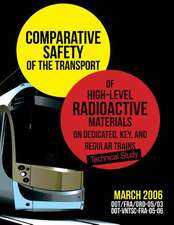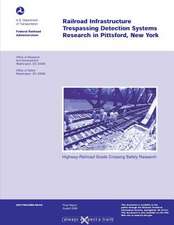Handbook of Railway Vehicle Dynamics, Second Edition
Editat de Simon Iwnicki, Maksym Spiryagin, Colin Cole, Tim McSweeneyen Limba Engleză Hardback – 28 noi 2019
Preț: 1648.85 lei
Preț vechi: 2010.79 lei
-18% Nou
Puncte Express: 2473
Preț estimativ în valută:
315.52€ • 337.39$ • 263.06£
315.52€ • 337.39$ • 263.06£
Carte tipărită la comandă
Livrare economică 17 aprilie-01 mai
Livrare express 13-19 martie pentru 342.37 lei
Preluare comenzi: 021 569.72.76
Specificații
ISBN-13: 9781138602854
ISBN-10: 113860285X
Pagini: 913
Ilustrații: 719 Line drawings, black and white; 123 Halftones, black and white; 75 Tables, black and white; 842 Illustrations, black and white
Dimensiuni: 178 x 254 x 58 mm
Greutate: 1.88 kg
Ediția:Nouă
Editura: CRC Press
Colecția CRC Press
ISBN-10: 113860285X
Pagini: 913
Ilustrații: 719 Line drawings, black and white; 123 Halftones, black and white; 75 Tables, black and white; 842 Illustrations, black and white
Dimensiuni: 178 x 254 x 58 mm
Greutate: 1.88 kg
Ediția:Nouă
Editura: CRC Press
Colecția CRC Press
Public țintă
ProfessionalCuprins
1. Introduction 2. A History of Railway Vehicle Dynamics 3. Design of Unpowered Railway Vehicles 4. Design of Powered Rail Vehicles and Locomotives 5. Magnetic Levitation Vehicles 6. Suspension Elements and Their Characteristics 7. Wheel-Rail Contact Mechanics 8. Tribology of the Wheel-Rail Contact 9. Track Design, Dynamics and Modelling 10. Gauging Issues 11. Railway Vehicle Derailment and Prevention 12. Rail Vehicle Aerodynamics 13. Longitudinal Train Dynamics and Vehicle Stability in Train Operations 14. Noise and Vibration from Railway Vehicles 15. Active Suspensions 16. Dynamics of the Pantograph-Catenary System 17. Simulation of Railway Vehicle Dynamics 18. Field Testing and Instrumentation of Railway Vehicles 19. Roller Rigs 20. Scale Testing Theory and Approaches 21. Railway Vehicle Dynamics Glossary
Notă biografică
Simon Iwnicki is professor of railway engineering at the University of Huddersfield in the UK, where he is director of the Institute of Railway Research (IRR). The IRR has an international reputation for its research and support to industry, providing not only valuable practical solutions to specific problems in the industry but also making significant contributions to the understanding of some of the fundamental mechanisms of the wheel-rail interaction on which the safe and economical operation of railways depends. Professor Iwnicki is the editor-in-chief of Part F of the Proceedings of the Institution of Mechanical Engineers (the Journal of Rail and Rapid Transit) and co-editor (responsible for railway matters) of the journal Vehicle System Dynamics. He was the academic co-chair of the Rail Research UK Association (RRUKA) from 2010 to 2014, and, from 2014 to 2015, he was chair of the railway division of the Institution of Mechanical Engineers. He is a former member of the Scientific Committee of Shift2Rail.
Maksym Spiryagin is a professor of engineering and the deputy director of the Centre for Railway Engineering at Central Queensland University, Australia. He received his PhD in the field of railway transport in 2004 at the East Ukrainian National University. Professor Spiryagin’s involvement in academia and railway industry projects includes research experience in Australia, China, Italy, South Korea and Ukraine, involving locomotive design and traction, rail vehicle dynamics, acoustics and real-time and software-enabled control systems, mechatronics and the development of complex mechatronic systems using various approaches (co-simulation, software-in-the-loop, processor-in-the-loop and hardware-in-the loop simulations).
Colin Cole is a professor of mechanical engineering and the director of the Centre for Railway Engineering at Central Queensland University, Australia. His work history includes over 31 years in railway industry and research roles starting in 1984, with six years working in mechanised track maintenance in Queensland Railways. Since then, his experience has included both rolling stock and infrastructure areas. He has worked in railway research for the past 25 years, and his 1999 PhD thesis was on Longitudinal Train Dynamics. He has conducted a range of rail projects related to field testing of trains, simulation of dynamics, energy studies, train braking, derailment investigation, railway standards and innovations in measurement and control devices.
Tim McSweeney is an adjunct research fellow at the Centre for Railway Engineering (CRE) at Central Queensland University in Australia. He has over 45 years of experience in the field of railway fixed infrastructure asset management, specialising particularly in track engineering in the heavy-haul environment. He was the senior infrastructure manager overseeing the Bowen Basin Coal Network for Queensland Rail from 1991 until 2001. He then joined the CRE to follow his interest in railway research. Tim is a member of the Railway Technical Society of Australasia and a Fellow of the Permanent Way Institution. Central Queensland University awarded him an Honorary Master of Engineering degree in 2011. He has co-authored 2 books and 30 technical papers and consultancy reports on various aspects of railway engineering and operations.
Maksym Spiryagin is a professor of engineering and the deputy director of the Centre for Railway Engineering at Central Queensland University, Australia. He received his PhD in the field of railway transport in 2004 at the East Ukrainian National University. Professor Spiryagin’s involvement in academia and railway industry projects includes research experience in Australia, China, Italy, South Korea and Ukraine, involving locomotive design and traction, rail vehicle dynamics, acoustics and real-time and software-enabled control systems, mechatronics and the development of complex mechatronic systems using various approaches (co-simulation, software-in-the-loop, processor-in-the-loop and hardware-in-the loop simulations).
Colin Cole is a professor of mechanical engineering and the director of the Centre for Railway Engineering at Central Queensland University, Australia. His work history includes over 31 years in railway industry and research roles starting in 1984, with six years working in mechanised track maintenance in Queensland Railways. Since then, his experience has included both rolling stock and infrastructure areas. He has worked in railway research for the past 25 years, and his 1999 PhD thesis was on Longitudinal Train Dynamics. He has conducted a range of rail projects related to field testing of trains, simulation of dynamics, energy studies, train braking, derailment investigation, railway standards and innovations in measurement and control devices.
Tim McSweeney is an adjunct research fellow at the Centre for Railway Engineering (CRE) at Central Queensland University in Australia. He has over 45 years of experience in the field of railway fixed infrastructure asset management, specialising particularly in track engineering in the heavy-haul environment. He was the senior infrastructure manager overseeing the Bowen Basin Coal Network for Queensland Rail from 1991 until 2001. He then joined the CRE to follow his interest in railway research. Tim is a member of the Railway Technical Society of Australasia and a Fellow of the Permanent Way Institution. Central Queensland University awarded him an Honorary Master of Engineering degree in 2011. He has co-authored 2 books and 30 technical papers and consultancy reports on various aspects of railway engineering and operations.
Descriere
The Handbook of Railway Vehicle Dynamics, Second Edition provides expanded, fully updated coverage of railway vehicle dynamics. With chapters by international experts, this work surveys main areas of rolling stock and locomotive dynamics.
